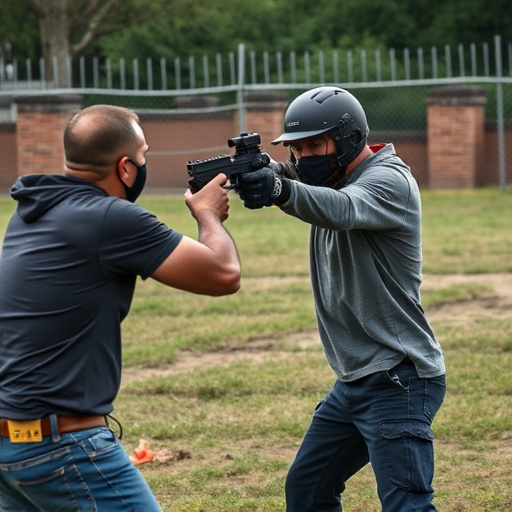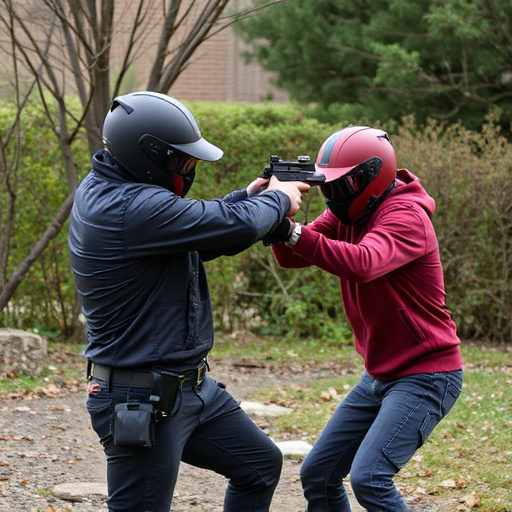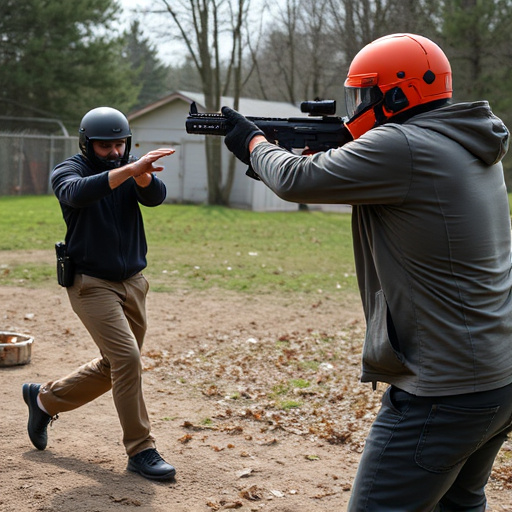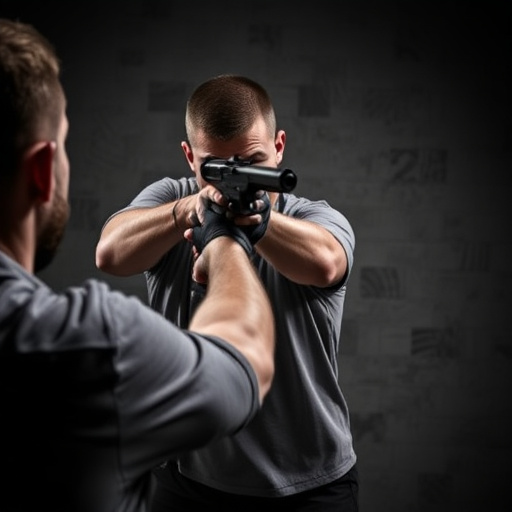Understanding electrical current is key when evaluating Police Grade Stun Gun Options. These devices impair muscle and nerve function through powerful currents delivered via metal probes, with duration and voltage determining effectiveness. High-performance guns offer various stun durations (2-5 seconds), safety mechanisms, and customizable options for self-defense and crowd control. Optimal current flow, achieved through well-designed electrodes, wiring, and circuitry, ensures potent yet controlled shocks. Prioritize safety by following best practices, including training, maintenance, and understanding local laws; invest in high-quality devices with desirable features like water resistance and LED flashlights.
“Electrical current is the lifeblood of stun devices, enabling their powerful impact on an opponent. This article delves into the intricate workings of these self-defense tools, focusing on how police-grade stun guns utilize electrical current to disrupt muscle control and cause disorientation. From understanding fundamental principles to exploring key components and safety practices, we offer a comprehensive overview of effective current flow in stun devices, helping users make informed decisions when choosing from various police grade stun gun options.”
- Understanding Electrical Current: The Basis of Stun Device Functionality
- Police Grade Stun Guns: A Comprehensive Overview
- How Stun Devices Disrupt Muscle Control and Cause Disorientation
- Key Components That Contribute to Effective Current Flow in Stun Devices
- Safety Precautions and Best Practices for Using Stun Devices
- Comparing Different Stun Gun Options: Features and Specifications
Understanding Electrical Current: The Basis of Stun Device Functionality

Understanding Electrical current is paramount when discussing the inner workings of stun devices, especially in the context of high-quality police-grade options. These devices operate by utilizing an electric current to disrupt muscles and nerves, temporarily paralyzing the target. The strength and duration of this current are key factors determining the device’s effectiveness.
Police-grade stun guns, known for their robust performance, employ powerful electrical currents delivered through sharp metal probes or contacts. This current flow disrupts the electrical signals that control muscle movement, resulting in a powerful stun effect. Understanding how electrical current translates into this disruption is essential when considering different stun device options, ensuring users can make informed choices based on their specific needs and safety requirements.
Police Grade Stun Guns: A Comprehensive Overview

Police-grade stun guns are designed with high-power electric current flow in mind, offering a range of advanced features for effective use by law enforcement officers. These devices typically feature higher voltage and amperage outputs compared to consumer-grade models, ensuring powerful and immediate incapacitation. The most popular Police Grade Stun Gun Options include those with stun durations of 2-5 seconds, allowing for quick deployment without causing permanent harm.
These stun guns are constructed with durable materials and robust designs to withstand rigorous use in challenging environments. They often incorporate advanced safety mechanisms such as motion sensors and automatic shut-off features to prevent accidental activation or misuse. With various shapes, sizes, and carrying options available, officers can choose devices that best suit their needs and preferences, ensuring they have a reliable tool for self-defense and crowd control situations.
How Stun Devices Disrupt Muscle Control and Cause Disorientation

Stun devices disrupt muscle control by using electrical current to interfere with the nerve signals that tell muscles what to do. When a stun device is activated, it delivers a strong electric pulse that overrides these signals, causing sudden and powerful contractions in the target’s muscles. This disruption leads to loss of balance, coordination, and often, temporary paralysis. The effect is designed to incapacitate the target quickly, allowing users to escape dangerous situations or for law enforcement officers to control suspects without causing serious harm.
Police-grade stun gun options are specifically engineered to maximize this disruptive effect while adhering to safety standards. They employ high voltage and precise current delivery mechanisms to ensure effective neutralization with minimal energy expenditure. This not only prolongs the battery life of the device but also reduces the risk of accidental discharge, making them reliable tools for both professionals and individuals seeking robust personal protection.
Key Components That Contribute to Effective Current Flow in Stun Devices

The effectiveness of a stun device, often seen in Police Grade Stun Gun options, relies heavily on optimal current flow. Key components play a critical role in ensuring this efficient energy transfer. First and foremost is the electrode system—well-designed electrodes ensure direct contact with the target, facilitating a strong electrical path for current to follow. The quality of these electrodes significantly impacts the stun device’s performance and safety.
Additionally, the internal wiring and circuit design are crucial. Stun devices utilize specialized high-current wires that can withstand intense electrical currents without failing. Advanced circuitry manages the flow of current, ensuring it is delivered precisely where needed, maximizing the stun effect while minimizing collateral damage. These components work in harmony to provide a powerful yet controlled electric shock when activated.
Safety Precautions and Best Practices for Using Stun Devices

When using stun devices, safety should always be the top priority. It’s crucial to remember that while stun guns and similar devices are designed for self-defense purposes, they also carry electrical current that can cause harm or even severe injuries if not handled properly. Users should always familiarize themselves with local laws regarding stun device ownership and usage to avoid legal repercussions. Additionally, investing in high-quality Police Grade Stun Gun Options ensures both reliability and safety features designed to minimize the risk of accidental discharges or misuse.
Best practices include keeping the device out of reach of children and pets, storing it in a secure location, and regularly inspecting for any signs of damage or malfunction. Users should also be trained in the correct usage techniques, ensuring they know how to activate and aim the stun device accurately while minimizing the risk to themselves and others nearby. Regular maintenance, including keeping the device clean and dry, is essential to maintain optimal performance. Always remember that a stun device is not a substitute for self-defense training or situational awareness; it’s a tool to be used in conjunction with sound judgment and safety precautions.
Comparing Different Stun Gun Options: Features and Specifications

When comparing police grade stun gun options, it’s crucial to understand the variations in features and specifications that set them apart. High-end models often boast higher voltage outputs, ensuring powerful jolts that incapacitate attackers temporarily. Some advanced devices also include multiple settings for different scenarios, allowing users to adjust the intensity based on need. Features like long-lasting batteries, quick recharge times, and compact designs make modern stun guns more convenient and reliable.
In terms of build quality, robust construction with durable materials is essential for a stun gun to withstand regular use. Water resistance and shockproof ratings are also desirable traits, especially for law enforcement officers who may encounter wet or challenging conditions. Additionally, the presence of LED flashlights and alarm systems adds versatility and safety features to top-tier stun guns, making them versatile tools for various situations.
Stun devices, with their ability to disrupt muscle control and cause disorientation through precise electrical current flow, offer a powerful tool for personal safety. Understanding the key components that contribute to effective current delivery, such as electrode placement and power sources, is crucial when selecting from the various police grade stun gun options available. By following best practices and safety precautions outlined in this article, users can leverage the benefits of stun devices while ensuring their safe and effective use.
